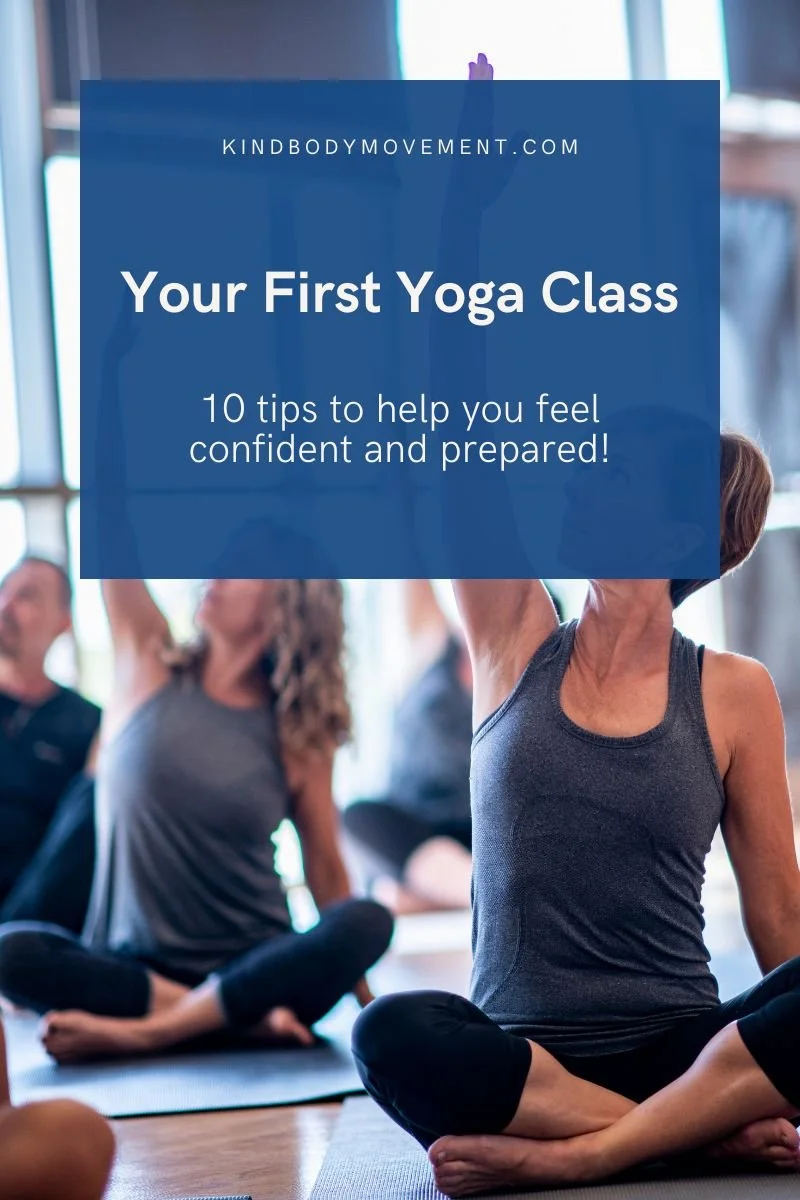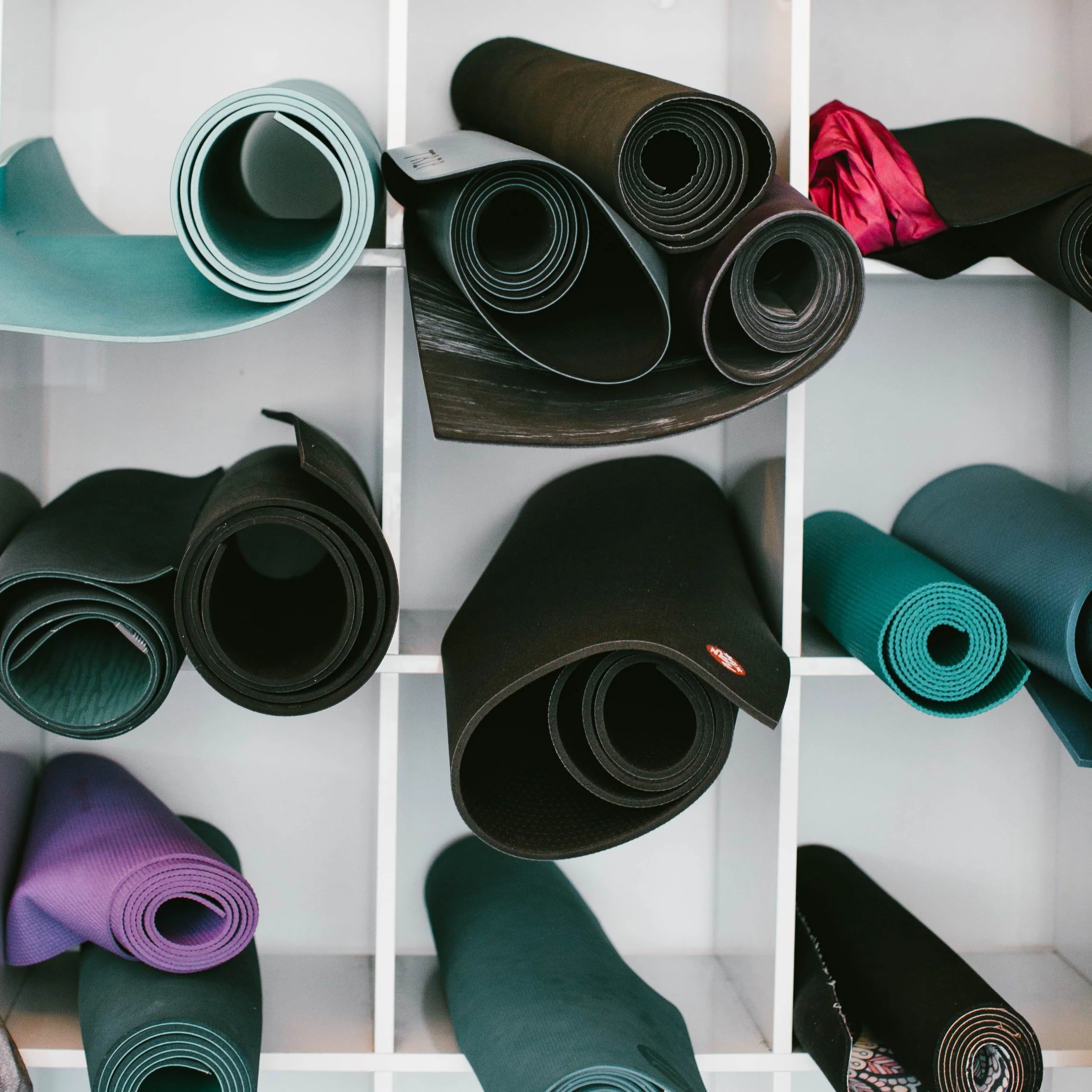10 Tips for Your First Yoga Class
Are you nervous for your first yoga class?
Sometimes I link to products I love. As an Amazon Associate, I earn a commission from qualifying purchases.
The other day I got a text from a family member about going to her first yoga class in a decade: “I’m nervous! Do I wear socks? I don’t have a mat but they have some. Ewww. Do I need to put my hair up?”
When I think back to my first yoga experience, it’s easy to identify with that feeling of nervousness. Yoga studios can be intimidating! I should know—I taught at one for 10 years.
If you’re feeling nervous for your first yoga class, know that you’re not alone. I’ve worked with my fair share of yoga newbies over the years and nearly all of them were unsure of themselves in one way or another.
I hope these tips help you feel more confident and prepared for your first yoga class!
10 Tips for Your First Yoga Class
1. It’s ok to be nervous.
You’re trying something new in a new place with new people. Maybe you haven’t moved your body much lately and you’re not sure what will happen. Before you head into the studio, take a deep breath, relax your shoulders, and feel what your feet feel. Thankfully, most yoga classes include some relaxation at the end.
2. Don’t wear socks.
Because my feet get cold, sometimes in the winter I will leave my socks on until the moment class begins and I’ll keep them near my mat to put back on for corpse pose (relaxation) at the end. Going barefoot on your mat will help prevent sliding, making you feel more stable in standing poses. If you really don’t want to show off your feet, grab a pair of grippy socks like these.
3. Bring your own mat if you can (or borrow one and ask for some mat cleaner).
Most yoga studios sell high-end mats that can be pricey. Since you’re just starting out, I recommend getting a “starter mat” like this one that won’t break the bank. If you discover that you love yoga and you want to practice it a lot, then graduate to a nicer, more durable mat that will last for a while. (I graduated to this mat after I completed my yoga teacher training.)
If you don’t have a mat and don’t want to purchase one, many studios have some to rent for a small fee or to borrow for free. Hopefully, the studio encourages students to wipe the mats down at the end of class with the mat cleaner provided. You might not want to spray off your borrowed mat before class—it could take a little time to dry and you don’t want to be playing slip ’n slide.
There will be times in class when your face is really close to the mat and you will probably be asked to rest your forehead on it as well. If that grosses you out, bring a hand towel or washcloth to rest your head on. Besides, if you tend toward sweaty palms, a small towel at the front of your mat can help prevent your hands from slipping in downward facing dog.
4. Dress to move.
When I used to teach beginner series, I saw folks show up for class in all kinds of attire—even jeans! Wear clothes that let your parts move to their fullest capacity. If you know you can lift your arm so high but your shirt stops you part way, choose another shirt! If you know you can get your leg out to the side and up but your pants make it difficult, choose other pants!
Tight fitting clothes make it easier for instructors to see your alignment in each pose but if you feel restricted (or like you can’t breathe) in tight yoga pants or athletic wear, opt for something a little looser. Consider the length of your pants—you might get annoyed if they’re long enough to step on.
Remember that you’ll be partially upside down throughout class (downward facing dog)—if you wear a billowy shirt, it might keep falling towards your shoulders thus exposing your midsection. Either choose a shirt that doesn’t ride up or a shirt you can comfortably tuck in (and still move your arms without untucking).
A note about shorts: Consider what may or may not be visible in loose-fitting shorts. Wearing boxers under loose-fitting shorts may result in you flashing your teacher or another student. Consider wearing compression shorts under gym shorts to avoid exposing yourself.
A note about tights: Before you leave home, stand with your back to a mirror, bend your knees and bend over. Check your rear in the mirror to make sure your tights aren’t see through when stretched to max capacity.
5. Consider your hair.
If you think your hair will get in your eyes, put it up. But also consider what it will feel like when you lie down on your back. When I have long hair, I prefer a high pony or a braid.
6. Bring water.
This is self-explanatory. However, if you’re going to a hot yoga class (especially one of those REALLY hot ones) bring an insulated bottle like this one so your water stays cold. You can thank me later.
7. Choose a place in the middle.
You might be tempted to head straight for the back of the class but then you could have trouble seeing or hearing the teacher. Opt for a spot in the middle of the room so you can blend in and still catch the instructions. If someone gives you the stink eye for taking their favorite spot, just say “Namastay right here.”
8. Tell the teacher you’re new.
Don’t be afraid to catch the teacher before class and let him or her know that this is your first time. If you have a movement restriction (like you can’t bend your knees very far) let the teacher know that too. He or she should be able to help you modify any poses to meet you where you are. They’ll also be able to tell you if you need any special equipment (props) and show you where they are.
9. If something hurts, don’t do it.
Yoga teachers have the tough job of making a one-size-fits all class for a group of people they may or may not know, all of whom have different ages, abilities, and interests. You might be asked to move your body in a way that doesn’t work well for you. If you get into a pose and you feel sharp pain, move out of that position and into one that doesn’t hurt.
I’ve encountered many beginners who just weren’t accustomed to feeling things in their bodies. As a result, they tended to label the sensations they felt as either good or bad. It can be a little more nuanced than that so pay attention to what you feel with curiosity.
For example, if you’re in a lunge for longer than you’re used to, your thigh will start to burn and maybe shake. It might “hurt” as well. I can’t speak for everyone or every circumstance, but typically a sensation like that is your muscle working harder than it’s used to—not an indication that you’ve injured yourself.
If something doesn’t feel right, back off and do less work. You can also ask the teacher for ideas on how to get more comfortable in the position.
10. Turn off your phone.
Don’t be that guy. Vibrate’s not good enough. Totally silence it or put it on airplane mode. Don’t be responsible for wrecking someone’s relaxation at the end of class because you get a text.
Conclusion
I’ve worked with countless beginner yoga students over the years and I wish I could have given them this information before their first class with me. I hope these tips help you feel more relaxed about heading into your first yoga class.
P.S. In case you were wondering, my family member enjoyed her first class. She did, however, comment that it was pretty crowded. So if you’re trying to fulfill your New Year’s resolutions and getting started with yoga in January, be prepared for bigger class sizes. If you enjoy the class, stick with it. By the end of February, numbers will probably be back down to normal.











